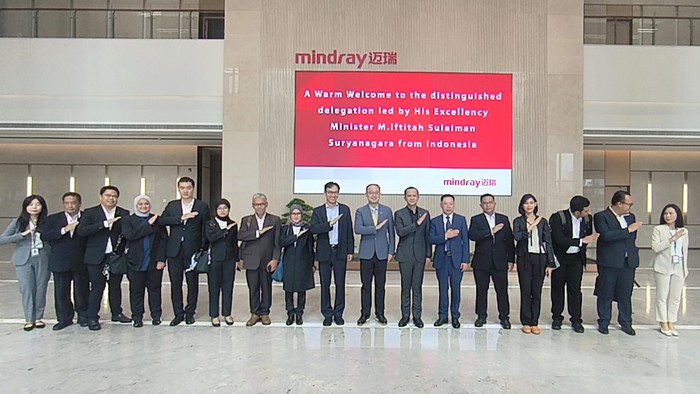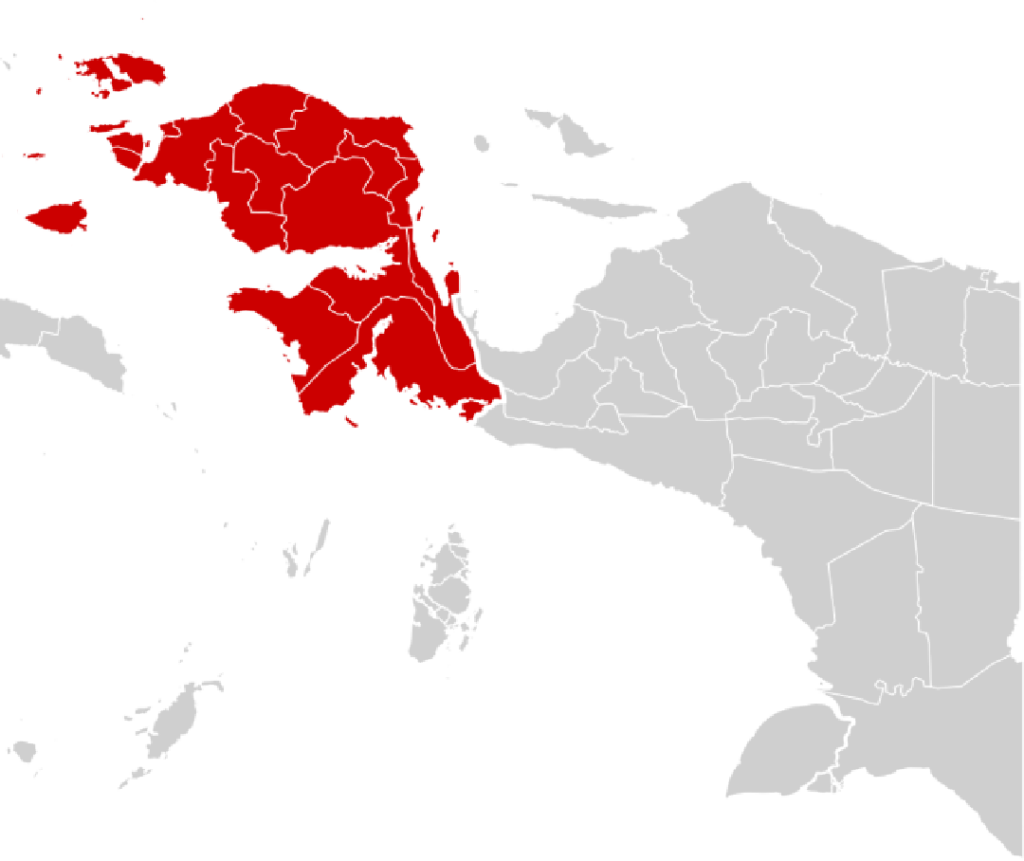Deep in Indonesia’s easternmost frontier lies Papua Selatan (South Papua), a land known for its vast natural beauty, rich cultures, and unique challenges. Historically marginalized and remote, Papua Selatan is now emerging as the centerpiece of a bold national vision. The Ministry of Transmigration, spearheading regional development initiatives, has identified Papua Selatan as a potential new hub for advanced health services—a place that could redefine healthcare access and economic growth in one of the country’s most underserved regions. This strategic pivot goes beyond infrastructure; it intertwines diplomacy, investment, human capital development, and community empowerment in a compelling story of transformation.
The Geographic and Strategic Promise of Papua Selatan
Papua Selatan’s potential as a health services hub arises from more than just local demand. Geographically, it occupies a pivotal location on Indonesia’s eastern edge, adjacent to Papua New Guinea and the Pacific Islands. Minister of Transmigration Muhammad Iftitah Sulaiman Suryanagara’s visit to Wuhan, Hubei Province, the People Republic of China on October 16, 2025, underscored this potential by emphasizing Papua Selatan’s capacity to become a cross-border health services magnet, drawing patients from neighboring countries and beyond. This vision is remarkable in its ambition: a region once seen as isolated and peripheral now positioning itself as a gateway for international health services in the Asia-Pacific.
The province’s natural advantages—its proximity to international borders and relatively underdeveloped health infrastructure—combine to create a unique opportunity. The Ministry of Transmigration recognizes that Papua Selatan’s remoteness is a double-edged sword: it has limited access to health services but also presents a blank canvas for pioneering investment in modern, integrated health systems. The ministry’s approach is not simply to plug gaps in the existing infrastructure but to build a comprehensive health ecosystem that blends clinical services, medical technology, and industrial capacity, thereby generating jobs and driving socio-economic uplift.
The Role of Transmigration Policy in Papua’s Development
Integral to the health hub plan is the Ministry of Transmigration’s broader mandate to encourage population redistribution and infrastructure development through transmigration programs. Transmigration in Papua aims to balance demographic pressures, improve livelihoods, and foster economic integration between Papua and Indonesia’s more developed regions. Papua Selatan’s health hub initiative is a direct extension of this strategy, leveraging transmigration lands not only for settlement but also as prime sites for health infrastructure development.
The Ministry’s invitation to Chinese investors and firms to build hospitals in transmigration zones reflects a forward-thinking fusion of social policy and economic diplomacy. In Wuhan, Minister Iftitah openly welcomed Chinese medical investors to participate in the construction of hospitals, signaling Indonesia’s openness to foreign partnership and technology transfer. This outreach embodies a new phase of Indonesia-China collaboration, one that extends beyond trade and infrastructure to the sensitive and complex sector of healthcare.
Transmigration’s involvement also means that these developments are tied to population movements, meaning health infrastructure will not only serve existing communities but also future migrants, creating a dynamic demand base that justifies substantial investment. The ministry sees Papua Selatan as an incubator for a new model of development—one where health services act as a catalyst for broader regional growth.
Chinese Partnerships: Technology, Investment, and Know-How
The visit to Mindray, a leading Chinese medical technology company headquartered in Wuhan, symbolizes a keystone of the ministry’s strategy. Mindray’s reputation for cutting-edge diagnostic and clinical equipment is well known globally, and the ministry envisions replicating similar industrial models in Papua Selatan. By attracting companies like Mindray to invest in research, development, and manufacturing facilities on Indonesian soil—specifically in transmigration zones—the government aims to nurture a medical-industrial cluster that goes beyond traditional hospital construction.
Such partnerships are critical for overcoming the twin challenges of infrastructure quality and operational sustainability. Indonesia hopes that through technology transfer and local capacity building, Papua Selatan’s health facilities will be equipped with state-of-the-art tools while also developing local expertise to maintain and innovate upon them. This is particularly important given Papua’s harsh terrain and logistical difficulties, where advanced technology can reduce service gaps, enable telemedicine, and improve patient outcomes.
The ministry’s call for Chinese investment also highlights a pragmatic approach to funding and scaling the project. Traditional public funding alone cannot meet the capital and expertise demands of such an ambitious project. By blending foreign direct investment, public-private partnerships, and government incentives, Papua Selatan’s health hub has a higher chance of becoming financially viable and operationally efficient.
Human Resources: The Most Pressing Challenge
Despite the excitement around infrastructure and investment, human resources remain the single biggest hurdle for realizing Papua Selatan’s health ambitions. The existing health workforce in Papua is notoriously insufficient, with many remote districts lacking even basic medical personnel, let alone specialists. The provincial health department reports significant shortages across all cadres—doctors, nurses, midwives, and paramedics—making it difficult to provide consistent and quality care.
Building world-class hospitals will be futile without the staff to operate them effectively. The Ministry is therefore committed to parallel investments in human capital development, including training programs, incentives for health workers to serve in Papua, and efforts to recruit and train indigenous Papua health cadres. Success stories such as the awards given to local health workers and cadres indicate a growing recognition of the need for localized capacity, which also fosters trust within communities.
Additionally, the integration of telemedicine and digital health platforms, supported by partnerships with tech firms, is expected to alleviate some workforce pressures by enabling remote consultations and specialist support. However, long-term sustainability will depend on creating career pathways and improving working conditions to retain talent in what remains a challenging environment.
Infrastructure and Logistics: Building in a Challenging Terrain
Constructing a health services hub in Papua Selatan is not just about erecting buildings. The logistical challenges of the region’s rugged geography, sparse road networks, and limited power and water infrastructure require innovative planning and investment. Hospitals must be accessible to the scattered population, supplied with reliable electricity and water, and connected to referral networks that can operate efficiently despite physical barriers.
The Ministry’s vision includes building “vertical hospitals” with multiple specialized departments capable of handling complex medical cases locally, reducing the need for patients to travel to distant provincial capitals or Jakarta. Such hospitals will need advanced diagnostic equipment, emergency units, and well-equipped operating theaters, demanding a high level of coordination across construction, medical, and utility sectors.
At the same time, infrastructure investment must incorporate sustainable practices. Renewable energy solutions, water recycling, and digital connectivity will be critical for making Papua Selatan’s hospitals resilient and future-proof. Government agencies are expected to collaborate closely with investors and local authorities to create comprehensive infrastructure roadmaps that address these complexities.
Social and Cultural Dimensions: Building Trust and Community Acceptance
Health services do not operate in a vacuum. For Papua Selatan’s health hub to succeed, it must gain the trust and acceptance of local communities, many of whom have strong cultural ties and unique health beliefs. The ministry is mindful that introducing modern, high-tech medical services must be complemented by culturally sensitive approaches that respect local traditions and languages.
Engaging traditional leaders, empowering community health cadres, and ensuring health services are linguistically and culturally accessible are all crucial for bridging gaps between modern medicine and indigenous practices. This holistic approach also means integrating preventative care, maternal and child health, and nutrition programs that align with community needs.
The Ministry’s transmigration framework also plays a role here, fostering social cohesion by linking new migrant populations with indigenous residents, creating a shared stake in the health system’s success. Trust-building will also be essential in attracting patients to new health facilities and ensuring that investments translate into real health improvements.
Early Steps and Future Outlook
Though much of the vision is still unfolding, several encouraging developments illustrate momentum. Collaboration with local hospitals such as RS Bunda Pengharapan (RSBP) in Merauke signals efforts to anchor new health hubs in existing institutions. The ministry’s ongoing engagement with Chinese partners points to concrete investment pipelines, while community health initiatives and awards recognize the growing health workforce capacity.
Furthermore, the government’s commitment to building vertical referral hospitals and expanding the National Health Insurance (JKN) system strengthens the financial and operational base needed for the health hub. Patient stories from Merauke exemplify the positive impact these initiatives have on access and care quality.
Looking ahead, Papua Selatan’s journey to becoming a health services hub will require sustained political will, coordination among multiple stakeholders, and adaptive management to navigate unforeseen challenges. However, the vision aligns closely with Indonesia’s broader goals of equitable development, regional integration, and health system modernization.
Conclusion
Indonesia’s Ministry of Transmigration is positioning Papua Selatan as a transformative hub for health services—an ambitious project that seeks to leverage geography, policy, investment, and human capital in a region once considered a development backwater. The ministry’s strategic outreach to China and emphasis on combining medical infrastructure with industrial and technological capacity distinguish this plan from conventional health projects.
Success here could redefine health access for Papua’s diverse and remote populations, establish new economic pathways, and potentially position Papua Selatan as a regional health destination in the Asia-Pacific. Achieving this will require overcoming significant challenges in workforce, infrastructure, and cultural integration, but the foundational steps are being laid with vision, diplomacy, and determination.
In the next decade, Papua Selatan may well become a beacon of what integrated health and regional development can achieve in Indonesia’s most challenging frontiers—and a testament to the power of strategic, forward-looking policy in reshaping the future.


